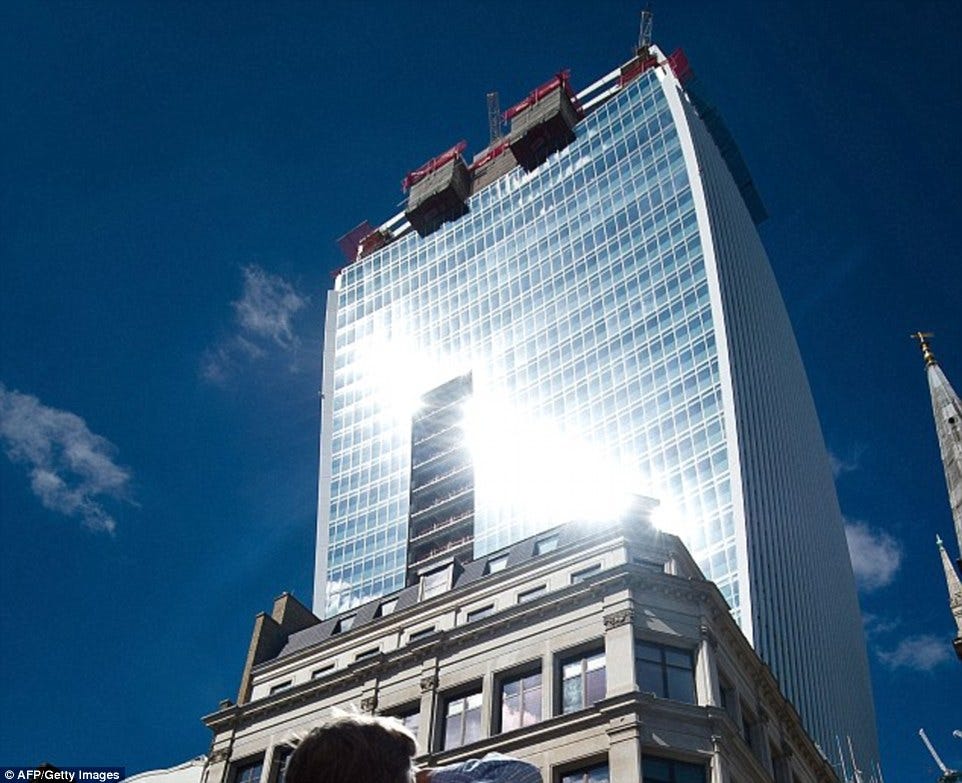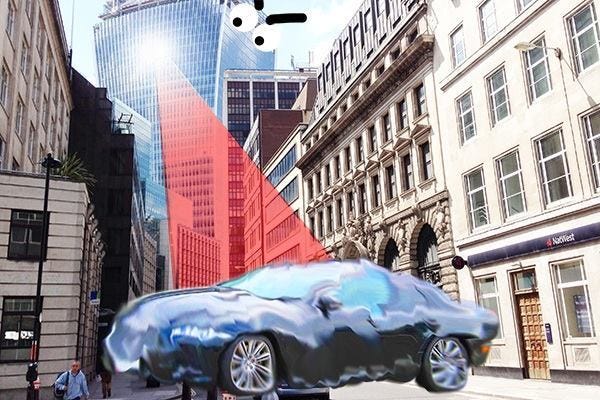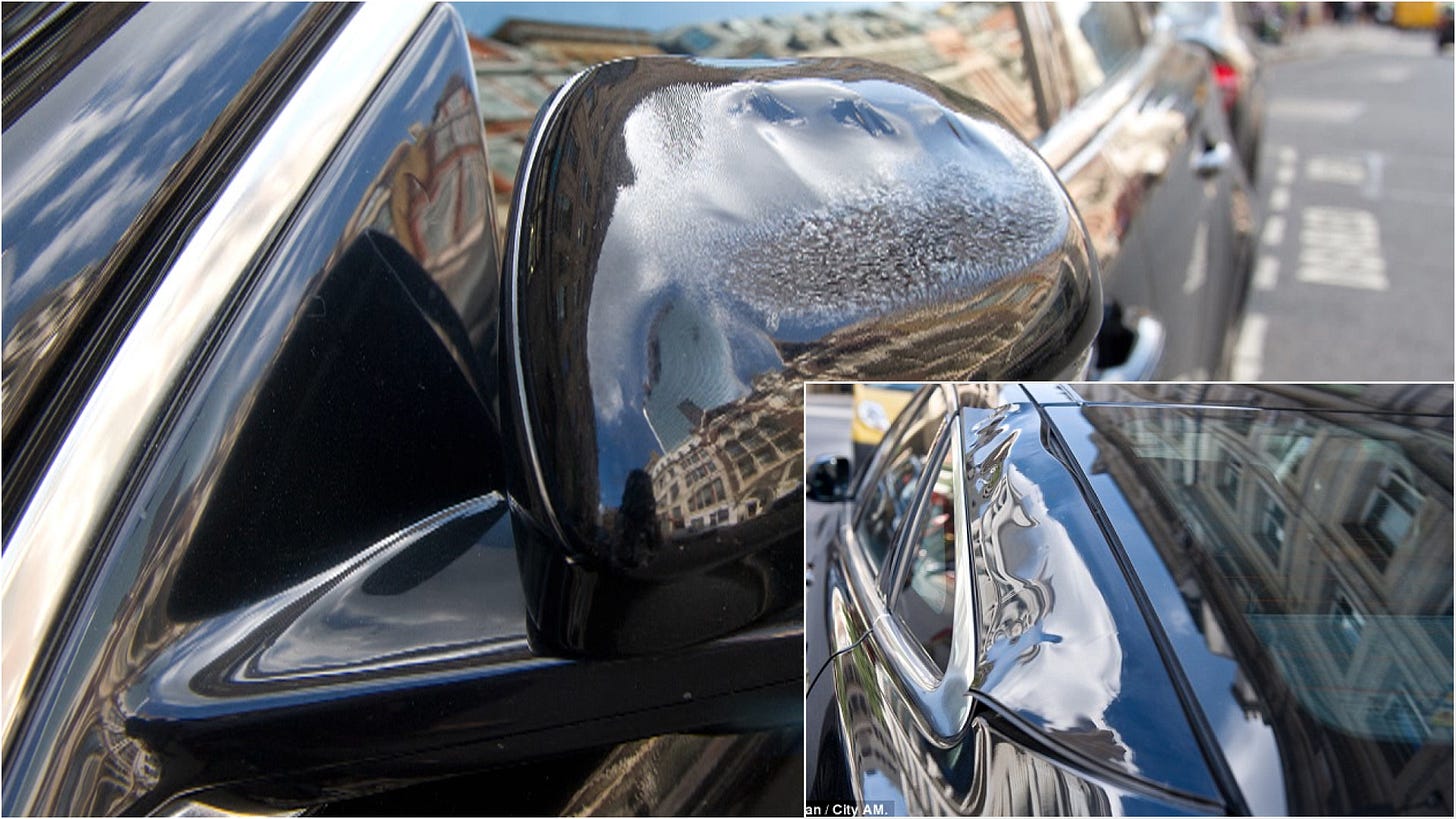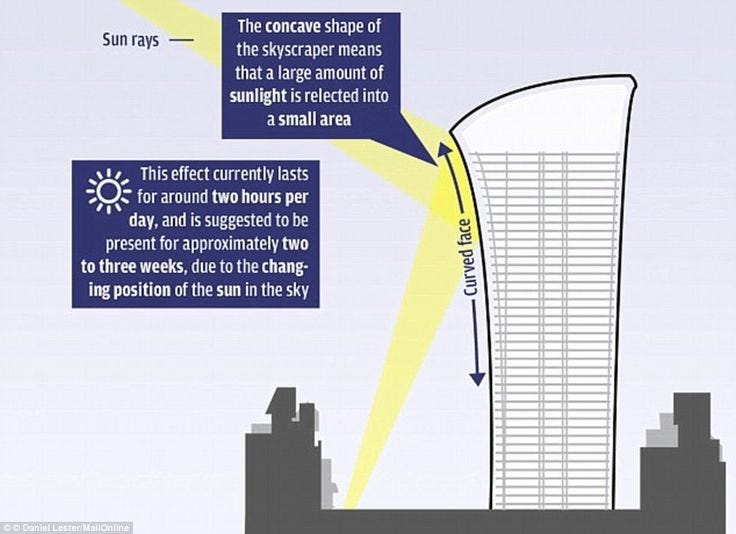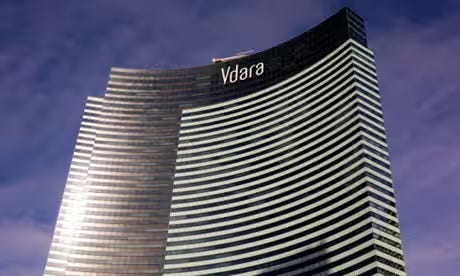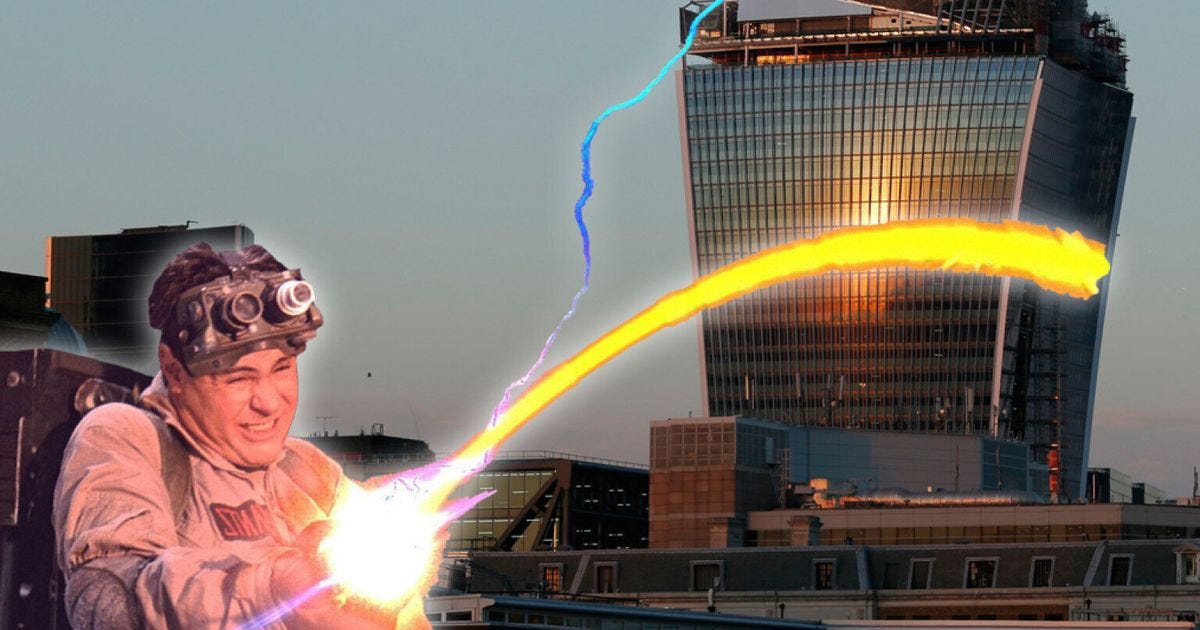🧵 The Skyscraper That Melted Cars
London’s ‘Walkie Talkie’ Building
In 2013, London’s 20 Fenchurch Street building—nicknamed the ‘Walkie Talkie’ for its curved, bulky shape—hit the headlines for a bizarre and unexpected reason: it was melting cars. Instead of just standing out in London’s skyline as a bold piece of architecture, the building became famous for something else entirely—its curved glass facade turned it into a giant magnifying glass, concentrating sunlight into a scorching beam that could fry eggs, warp shopfronts, and even melt parts of a parked car.
How Did It Happen?
The problem came down to the building’s concave glass facade. Designed by Uruguayan architect Rafael Viñoly, the building’s curved structure inadvertently turned it into a giant concave mirror. During specific times of the day and year, the sun’s rays reflected off the curved glass panels and concentrated into an intense beam of heat onto Eastcheap Street, at ground level.
Onlookers and local businesses quickly dubbed the phenomenon the “death ray” or “solar glare.” At its peak, the reflected light created temperatures reaching 117°C (243°F)—hot enough to cause damage.
The Jaguar Incident
The most famous victim of the ‘Walkie Talkie’s’ heat ray was a Jaguar XJ owned by business owner Martin Lindsay. In September 2013, Lindsay parked his car near the building, only to return and find the car’s panels warped, its wing mirror melted, and parts of the dashboard scorched.
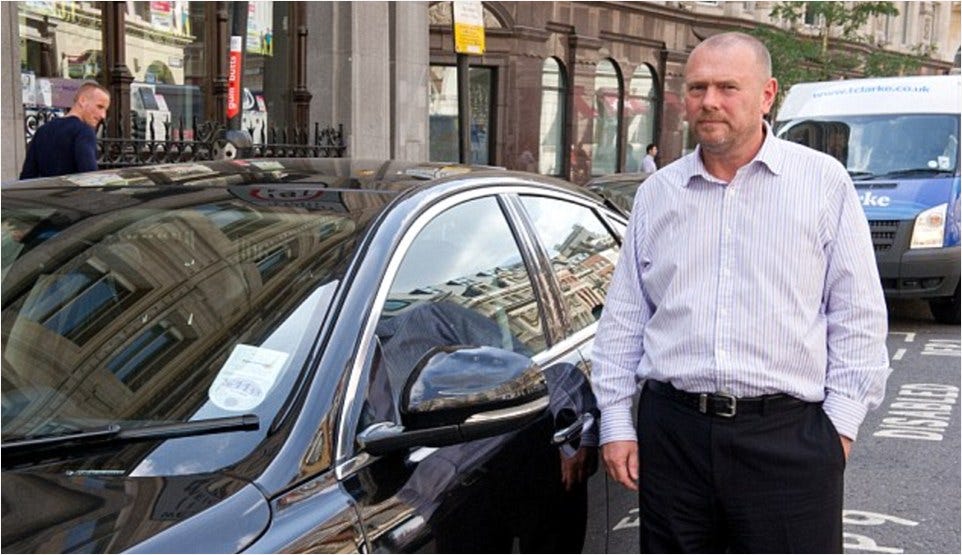
When questioned, Lindsay summed it up simply:
“They’re going to have to think of something. The sun was shining directly on the building, and the heat coming off it was just unbelievable.”
Other Casualties: Fried Eggs and Scorched Shops
The ‘Walkie Talkie’ building didn’t just target cars. Local shopkeepers reported melted signage, damaged paint, and scorched merchandise in window displays. The phenomenon became so absurd that one journalist even fried an egg on the pavement using the concentrated sunlight to prove just how hot it got.
Immediate Response and the Fix
Faced with public outrage and a barrage of negative media attention, developers Land Securities and Canary Wharf quickly installed a temporary shading system—a black mesh covering parts of the building to block and diffuse the reflected sunlight.
Not Rafael Viñoly’s First ‘Death Ray’
Believe it or not, the Walkie Talkie’s “death ray” wasn’t architect Rafael Viñoly’s first brush with reflected sunlight disasters. A few years earlier, his design for the Vdara Hotel in Las Vegas caused a similar problem. Guests lounging by the pool reported being singed by concentrated sunlight reflecting off the building’s glass facade—earning the Vdara the tongue-in-cheek nickname “The Death Ray Hotel.”
Criticism and the Carbuncle Cup
Even after the fixes, the Walkie Talkie couldn’t escape its critics. In 2015, it was “honored” with the Carbuncle Cup, a satirical award given to the worst building in the UK. The judges tore into its clunky design, its oversized impact on the London skyline, and, of course, the infamous solar glare incident that left shopfronts scorched and cars melted.
For architects and urban planners, it became a cautionary tale: environmental factors matter—like sunlight reflection—when designing skyscrapers for busy cities.
The Legacy of the Walkie Talkie
These days, 20 Fenchurch Street is fully functional, and its “death ray” issues have been resolved. But the story lives on as one of the quirkiest chapters in architectural history. It’s a reminder that even the most ambitious, high-tech designs can lead to unexpected—and sometimes hilarious—consequences.
Reflecting on the mishap, Rafael Viñoly summed it up best:
“We made a lot of mistakes with this building.”





